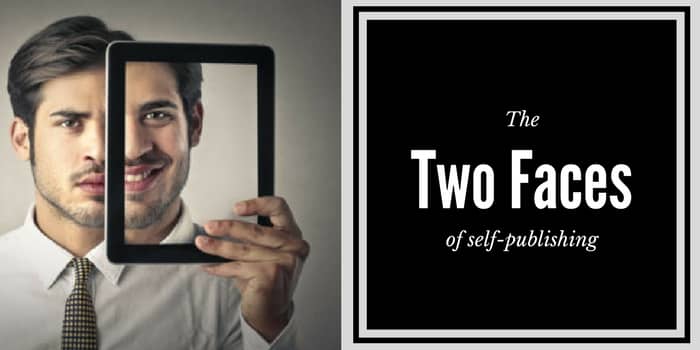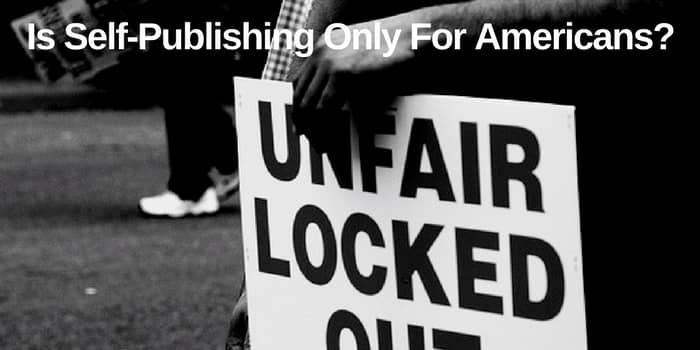
There are two facets to self-publishing
An all too forgotten side of self-publishing is the humble book. Yes, that’s it. The thing with a cover and pages. Cast aside by many in the last year or two, the book survives however, and I’m sure that passionate authors still want to see one with their name on the cover.
Oddly enough, Amazon is one of the companies that can make this happen via their Createspace print on demand subsidiary. There are other companies such as Lulu who can offer the same service, but what is fascinating about Amazon’s Createspace is that unlike their KDP wing, they are very happy to distribute a self-published title to almost every bookstore, library and online bookstore in the world. No exclusivity, no special clauses and no rules that forbid you from offering your own book on your own website.
I have used Createspace for many years now and it is an absolute joy to hear from readers of my books from all parts of the world. It is also wonderful to be able to tell potential readers of my books that they can order them at their local bookstore, absolutely anywhere in the world. Well, perhaps Antarctica may be difficult.
But when this fantastic self-publishing service is compared to the strict, almost draconian rules, terms and limitations that are part of Amazon’s Kindle Direct Publishing, you really have to wonder if it’s the same company. While KDP Select is known for its restrictive nature, including not even being able to offer you own ebook on your own website, the standard KDP still has nasty surprises. The infamous ‘Price Matching’ that Amazon attaches to many of their products applies to KDP ebooks, so it affects the ability to be able to offer discounts via other retailers. I won’t even mention mysterious algorithms that differentiate between KDP and KDPS or can affect an ebook’s ranking in microseconds.
While Amazon’s treatment of paperback and ebook self-publishing has two faces, so too does their Kindle Direct Publishing face. Does that make three faces?
There is no doubt that the publishing industry as a whole is in an ebook frenzy at the moment. But within this turmoil, there are also two faces that are becoming clearer by the day. Oddly enough, it is a facet that brings traditional and self-publishers together for a change. On one side there are the authors and publishers of fiction and non-fiction, who are following the age old formula or producing novels and books for people to read and enjoy. Years sometimes in the making.
Then there are the ebook marketers. Those who pump out Kindle ebooks intent on making fast money. So blatant, that this is even being done by algorithms to sweep the Internet for content. This article explains how one programmer has produced 100,000 Kindle ebooks. Yes, this is the ridiculous, but there are many, many writers pumping out words to fill Kindle ebooks that have no motivation other than making a quick buck, and definitely no interest at all in having their name on the cover of a real book.
Of the two faces of ebooks, the authors and publishers who still believe in the craft of writing will survive in the long term. The quick buck marketing writers though will disappear in time. The world is not that silly that people will continue to pay for rubbish.
While the ebook insanity continues though, there is still the book, the humble paperback, which Amazon continues to support, unrestricted. Perhaps though, this is the all too forgotten face of self-publishing. The book. The thing true authors yearn to have their name on.




The reason KDP and KDPS have such a different model from Createspace, is simply because KDP (indeed all things Kindle) was created entirely by Amazon. Createspace was originally an independent print on demand company struggling in direct competition with Lulu, holding it’s own but not looking like it was going to win the war any time soon. As Amazon’s ebook business took off. it became much more interested in all things self published and offered the struggling Createspace an edge that the smaller company could not refuse. I’m not sure what the terms of the agreement were but so far Createspace hasn’t seemed to change much from it’s original model at all, except now it’s marketed directly to kindle authors through Amazon’s KDP process.
I think that’s made Createspace a lot more popular than it’s previous competitor Lulu, despite the fact that Lulu has more printing options (including the coveted Hardcover) than Createspace does. I certainly seem to hear more of Createspace’s name lately than I do Lulu.
I’m a big fan and promoter of the paperback – a permanent artifact that will outlast every Kindle and other e-reader ever constructed (imagine a landfill containing all the broken, worn-out, and discarded e-readers that will be produced over the next century!) Caches of powerless e-readers are not going to preserve knowledge during the next Dark Age, no matter what wonderful materials they may contain. Caches of paper books just might.
I’ve had great luck with CreateSpace. I have a couple of on-line acquaintances who always buy their books in print and always order them through a bookstore. They probably wouldn’t have read my books if they couldn’t get them that way. And sometimes I think, if a professional publisher should latch onto my books right now and tell me, This is great stuff – we want to publish you – would I really want to take them up on it? A professional publisher may publish one of your books every two years. I’ve published 4 in 2012, a tiny one this year, and I have another one ready to go anytime. Furthermore, I have another 4 books in my series that only require a little editing and formatting and they will be ready to publish. I’m 72 years old. If I published only one book every two years, I’d probably be dead before I see them in print. I like self-publishing! What I really need is a company that, for a cut of the royalties, would undertake the hard marketing stuff – get the books into bookstores and into libraries and get them reviewed by “real” reviewers in respected media outlets. Is there any service like that in existence that anybody knows of? Somebody serious that won’t scam you?
Hmm, Lorinda, have you considered a small press? I haven’t looked into them too deeply myself but from what I’ve read on other authors blogs, a small press’ aim is to build a core group of readers interested in their content and then keep them well supplied. Which means they take a large chunk of the marketing upon themselves.
I am by no means sure of this but it wouldn’t hurt to look into it more if you’re interested in it! Good luck.
Thanks for the advice! I do have one small press that I’m watching. I’ll have to see if anything comes of that!